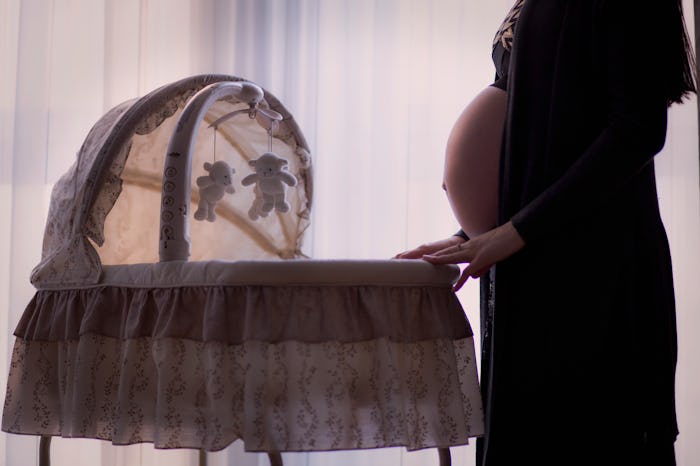Sudden Infant Death Syndrome (SIDS) continues to be one of new mothers' biggest fears. Though there are some well-known guidelines for preventing SIDS, research is always evolving and advice found on the internet can sometimes be contradictory. It's important to stay on top of new information, but there are at least four studies on SIDS that all parents should read. SIDS can feel like an overwhelmingly frightening possibility, but steps every parent can take may reduce the risk for their children.
SIDS, also called crib death, is primarily a threat to babies under 12 months old, according to Mayo Clinic. Because SIDS deaths tend to occur while babies are asleep, it's believed that the syndrome may be caused by brain abnormalities associated with breathing and a baby's ability to wake up. Around 3,500 babies die each year in cases of Sudden Unexpected Infant Death (SUID), the Centers for Disease Control and Prevention reported. In 2014, 44 percent of about 1,500 deaths attributed to SUID were determined to be related to SIDS (others are due to "accidental suffocation and strangulation" or an unidentified cause). Though it's commonly accepted in medicine that babies should sleep on their backs to prevent SIDS, according to Mayo Clinic, there is still research being done to determine what exactly causes the syndrome and what can be done to prevent it.
Create A Safe Sleep Environment
The CDC recommends reading a policy statement on SIDS from the American Academy of Pediatrics (AAP). Published in 2011, "SIDS and Other Sleep-Related Infant Deaths: Expansion of Recommendations for a Safe Infant Sleep Environment" provides an overview of research conclusions and offers comprehensive advice for guarding against SIDS.
It's not exactly a study, but the CDC also recommends reading "What does a safe sleep environment look like?" by the National Institute of Child Health and Human Development (NICHD). The two-page guide includes a quick summary of strategies for reducing the risk of SIDS and putting babies to bed safely.
The Potential Dangers of Swaddling
A study published in the journal of Pediatrics in May 2016 aggregates research to determine what association exists between swaddling and SIDS. "Swaddling and the Risk of Sudden Infant Death Syndrome: A Meta-analysis" concluded that avoiding "front or side positions" for infant sleep is particularly essential if an infant is swaddled. The study does offer a better understanding of what role swaddling may play in some SIDS cases, but it may also reassure mothers to know that there are more factors at play than swaddling alone. Based on the information provided, parents can make a more informed decision about whether to swaddle a newborn.
Brain Abnormalities
Results published in 2014 from a study funded by the Eunice Kennedy Shriver National Institute of Child Health and Human Development found that brain abnormalities in babies could play a role in inducing SIDS, according to a news release from the National Institutes of Health. Though brain abnormalities may not account for all cases of SIDS, the research does provide parents with an understanding of what could cause some cases and where research may be headed.
Common Mistakes
This month, Pediatrics published a study revealing the common mistakes parents make when putting babies to bed. "Nocturnal Video Assessment of Infant Sleep Environments" found that parents may not even know they're allowing their child to sleep in a dangerous environment; reading the study may help moms and dads learn from the mistakes of others to ensure they're taking the right precautions.
Because SIDS research is ongoing, new research is published often. But as a starting point, these four studies arm parents with the knowledge they need to do what they can to protect infants against the syndrome.
